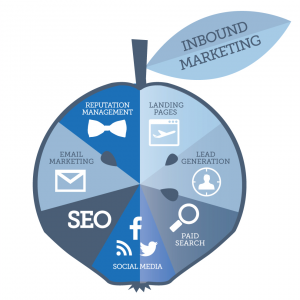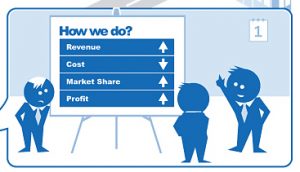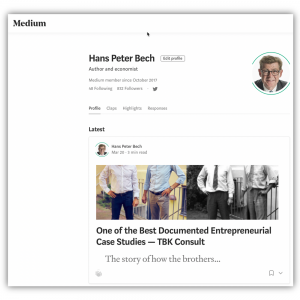What I learned from writing over 200 articles on LinkedIn
LinkedIn Publishing is a peripheral supplement to my content marketing activities. It is not the main stage. The marginal cost of reposting material is minimal, and the gain in terms of exposure, SEO recognition (LinkedIn articles are indexed by Google) and engagement justifies the effort. For the time being, I will continue to post articles on LinkedIn.
Allow me to start with a disclaimer. I am no social media guru telling what you should and shouldn’t do. In this post, I will share my motives for publishing articles on LinkedIn and what I believe I have learned. It’s entirely related to my business and the objectives I pursue. Feel free to add your experience and observations in the comments.
Let’s also start by getting the terminology right.

A LinkedIn post is the short-form message you make directly on your homepage. You have 1,300 characters available and minimal formatting options.
A LinkedIn article is a long-form message with no limits to the length, with more lavish formatting options.
I will guess that over 99 per cent of LinkedIn updates are made as posts and less than one per cent as articles. Correct me if you have the data.
My objectives
I am an author. My business objectives are simple:
- Write and publish books
- Motivate people to buy the books
- Deliver keynote presentations
- Run workshops
- Get writing engagements (not ghostwriting!)
My presence on LinkedIn is primarily motivated by how I believe the platform can support these five objectives. I will share my content and activity strategy later in the post.
My target audience
My books, keynotes etc. (my deliverables) are relevant for people working with revenue generation in the software industry. I presume that most of my target audience has a profile on LinkedIn. The majority of them will have chosen the industry categories Computer Software or Information Technology and Services. Still, some may have selected the category that they serve (media, banking, insurance, telco, etc.). They all work with business development, marketing and/or sales. By performing a search on Sales Navigator (to which I subscribe), I can find 4.5 million people that match these criteria.
This is my target audience.

If I was prepared to allocate a big budget, then I could run marketing campaigns that made my messages appear in their feeds. However, such an approach is unlikely to yield a positive return.
I know that only a fraction of my target audience read business books. A while ago, I asked 1,000 of my connections, and based on the responses, it seems that fifty per cent will read a business book now and then. I assume that there is an overrepresentation of business book readers among my connections. The segment of the 4.5 million that read non-fiction books is probably not more than around 25 per cent.
Let’s say that 25 per cent of the 25 per cent are in a situation where they actively look for outside inspiration within my areas of expertise. Based on these assumptions, at any time, around five per cent of the gross target audience is looking for inspiration that a book, a keynote or a workshop could satisfy. We are now down to 280,000 individuals at any point in time.
While anyone can decide to buy a book ($10 plus sales tax), only a tiny fraction has the budget and the authority to engage me to deliver a keynote, run a workshop or write custom content. Therefore, my primary objective with LinkedIn is to generate traffic to my blogs or directly to Amazon or other portals where you can buy the books.
The inbound content marketing-driven approach

Based on the analysis outlined above, I decided years ago that selling my deliverables should use the inbound marketing approach with in-depth content. People consume my deliverables because they are convinced that they will get input and inspiration for how they can fix critical business issues. Studying my material (books, whitepapers, posts, videos and podcasts) is the best way for anyone to assess if I can help them.
I assumed that people who read business books and need inspiration prefer content that is detailed as opposed to shorter, generic and more superficial posts.
That was my rationale for posting long-form articles on LinkedIn.
Measuring performance
Does posting articles on LinkedIn support my business objectives?
I don’t know for sure, but I do think it supports the first objective. I sell books every day; however, I can’t track how the readers found them.
I also produce content for clients, deliver keynotes and run workshops, and the majority of these clients have read one or more of my books. My books sell content engagements, keynotes and workshops. I don’t think my LinkedIn activities do that.
Vanity metrics

In total, my LinkedIn articles have achieved 139,586 views, which gives an average of 698 views per post. The best performing article has generated 18,476 views, and the poorest performing 29.
The articles have to date generated a total of 6,360 likes (on average 4.6 per cent of views), 1,107 comments and 2,048 shares. The highest number of likes an article has achieved is 350, but that was not the article with the highest comment/view score. The highest comment/view score was 21%.
The most interesting metric is the daily increase in the number of views. At the time of writing, that number is 580. In total, my articles get 580 new visits every day!! That, I believe, supports my book sales.
The engagement in terms of likes, comments and shares is not so important to me. I do respond to most of the comments and are happy for any actions my posts create. Although my content mostly offers a different perspective, my objective is not to provoke a discussion. If people find my articles helpful and carry on to buy a book, then that’s fine :-)
Content and activity strategy
Most of my content is non-promotional. Each article offers an independent and self-contained piece of insight that doesn’t require further action. You don’t need to download anything, pay with giving me your email and contact information or sign up for my newsletter.
I know that this speaks against the common practice which says that there should always be a clear call-to-action and that you should harvest email-addresses. But I don’t have a newsletter anymore (I may elaborate on that subject in a later post), and I don’t see the point in having my readers’ contact information. People can invite me to connect or follow me and they can add their email to the list that will get notified when my book is out. These are the options I provide.
LinkedIn is not the main venue

LinkedIn publishing is not the best blogging platform in the world. Far from. It has a decent editor, but the management- and stats-facilities for professional content producers are worse than lousy. My target audience is on LinkedIn and that is why I post here. Simple as that.
The most critical issue with LinkedIn as a publishing platform is that you have no control whatsoever. That’s the reason that I also publish my posts on my own blogs and on Medium. If LinkedIn decides to discontinue their Publishing platform, my content will survive.
Another issue is that LinkedIn, in their efforts to balance organic and paid sharing, seems to give preference to the advertisement budgets over their paying subscribers. When it comes to the organic content, they then prefer to boost the material that is easy to consume rather than the in-depth and specialised articles. The result is that short and generic content (applying to a broad audience) get promoted over narrow and detailed content. Several people have encouraged me to shift to short and generic posts to get more engagement, but that is out of the question. That’s like asking a jazz musician to play pop music. You cannot play music, that you do not like, well. Also, I think that producing light and generic material may attract people who do not need my books, so what have I gained?
LinkedIn Publishing is a peripheral supplement to my content marketing activities. It is not the main stage. The marginal cost of reposting material is minimal, and the gain in terms of exposure, SEO recognition (LinkedIn articles are indexed by Google) and engagement justifies the effort. For the time being, I will continue to post articles on LinkedIn.
If you want to learn more about how to use LinkedIn for business development, marketing and sales purposes, then I can recommend Melonie Dodaro’s brilliant book: LinkedIn Unlocked, Unlock the Mystery of LinkedIn to Drive More Sales Through Social Selling.
If you want attention on LinkedIn, post this type of content:
In the first 19 hours, this post drew 135,905 views, 7,1421 likes and 360 comments! Helping a deer in need has a very broad target group.
First published on LinkedIn Publishing on November 28th 2019








